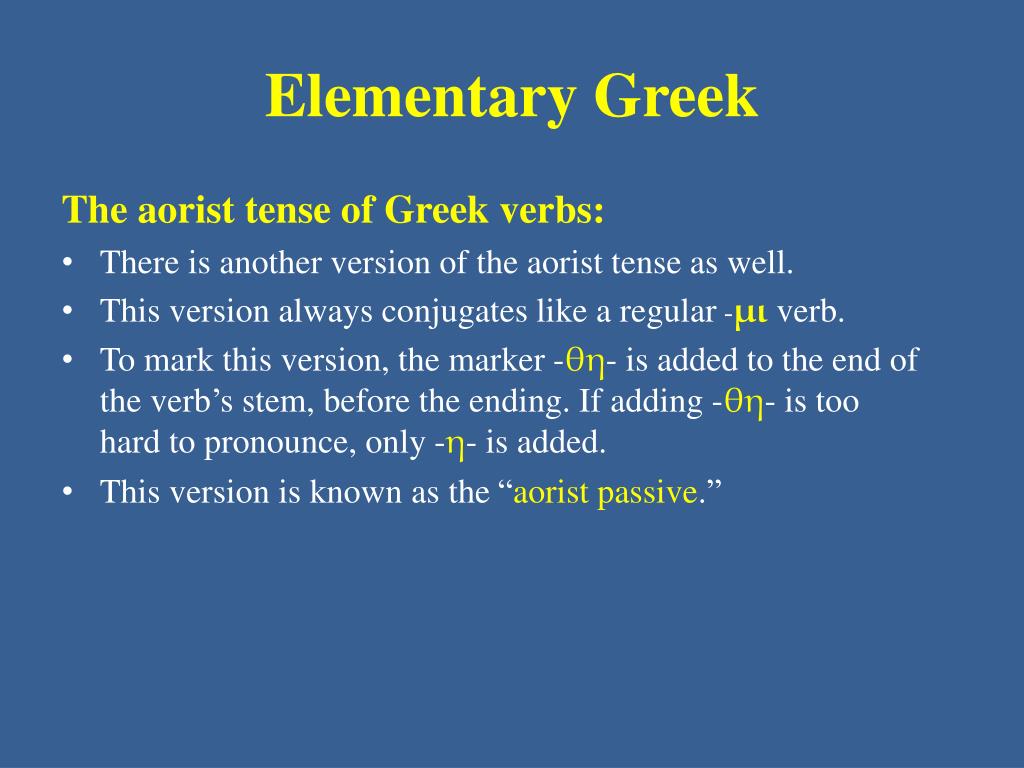The literary greek of athens in the fifth and fourth centuries bc attic.
Aorist passive attic greek.
κατέβην χθὲς εἰς πειραιᾶ.
For conjugation in dialects other than attic see appendix ancient greek dialectal conjugation.
First aorist active participle.
I take i take hold of grasp seize 800 bce 600 bce homer odyssey 6 81.
To form the aorist passive the following formula is used.
In the participle the η shortens to ε.
Some verbs form the aorist passive with the tense suffix ε lengthened to η in the indicative instead of θε θη as γράφω write verb stem γραφ ἐ γράφη ν.
The aorist tense always conveys a single discreet action i e.
While both the imperfect and aorist tenses refer to past actions and so are past tenses they differ in aspect.
Often in narrative it is found mixed with present and imperfect tenses.
If adding θη is too hard to pronounce only η is added.
As with the present and aorist subjunctive personal endings are simply added to the tense stem in this case the perfect tense stem.
σαντς σανς σας.
Though the perfect subjunctive is rarely encountered in greek s 691 693 its active form is relatively straightforward to identify.
I went down yesterday to piraeus.
Greek verbs and infinitives can express all three aspects but the most common are.
The first future passive uses the first passive stem with σο ε added to θη as λυθησ ο ε.
Verb stem σα ντ 3 1 3 adjective endings.
Verb stem θε ντ 3 1 3 adjective endings.
Predictable sound changes yield the following endings for the nominative singular of first aorist active participles.
Katébēn khthès eis peiraiâ.
The aorist tense greek ἀόριστος aóristos unbounded or indefinite describes a finished action in the past.
Advanced vocabulary lists as well as greek lexica provide six principal parts for greek verbs and the aorist passive is the sixth principal part.
These are called second aorists passive.
The pattern to form the first aorist active participle is.
Recall that the marker θη means an aorist is passive or intransitive.

